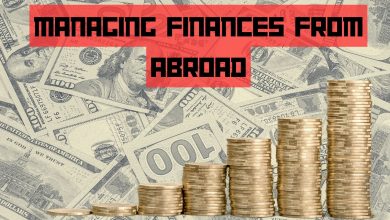Unlocking Financial Efficiency: Demystifying the Cash Management Account

In the dynamic landscape of personal finance, staying ahead requires strategic financial management. One crucial component that often goes unnoticed is the Cash Management Account (CMA). This financial tool has been gaining popularity for its ability to streamline money management, offering a versatile solution for individuals seeking convenience, flexibility, and efficiency in handling their funds.
Understanding the Cash Management Account
A Cash Management Account is a financial vehicle that combines the features of a traditional checking account with the benefits of a savings account and investment options. It serves as a centralized hub for your financial activities, providing a holistic approach to managing your money. Unlike standalone accounts, a CMA brings together various financial services under one umbrella, making it a powerful tool for optimizing cash flow.
Key Features of a Cash Management Account
- Banking Services:
- Checking Account: A CMA includes a checking component, allowing you to perform day-to-day transactions like paying bills, making purchases, and withdrawing cash.
- Savings Account: In addition to the checking feature, a CMA typically offers a linked savings account with competitive interest rates, helping your money grow over time.
- Investment Options:
- Money Market Funds: CMAs often provide access to money market funds, allowing you to earn a higher yield on your idle cash compared to a traditional savings account.
- Securities Trading: Some CMAs enable you to invest in a variety of securities, such as stocks and bonds, providing an opportunity for wealth accumulation.
- Debit and Credit Card Integration:
- A CMA usually comes with the convenience of a debit card, allowing you to access your funds at ATMs and make purchases. Some CMAs also offer credit card integration, streamlining your credit management within the same account.
- FDIC Insurance:
- Many Cash Management Accounts are backed by the Federal Deposit Insurance Corporation (FDIC), providing a layer of security for your deposits up to a certain limit.
Benefits of a Cash Management Account
- Consolidated Finances:
- One of the primary advantages of a CMA is the ability to centralize your finances. Instead of juggling multiple accounts, a CMA allows you to monitor and manage your checking, savings, and investments from a single platform.
- Enhanced Liquidity:
- With a CMA, you can seamlessly move funds between your checking and savings components, ensuring quick access to cash when needed. This flexibility enhances liquidity, a crucial factor in navigating unforeseen expenses.
- Interest Earnings:
- The integration of money market funds and competitive interest rates on the savings component enables your money to work harder for you. This can result in higher earnings compared to traditional checking or savings accounts.
- Investment Opportunities:
- For those looking to grow their wealth, the investment options within a CMA provide a gateway to the financial markets. Whether you’re a seasoned investor or a beginner, the ability to trade securities within the same account simplifies the investment process.
- Streamlined Transactions:
- Debit and credit card integration, along with online banking features, make transactions seamless. Whether you’re paying bills, transferring funds, or making investment decisions, a CMA offers a user-friendly experience.
Considerations Before Choosing a Cash Management Account
- Fees and Charges:
- Different CMAs may come with varying fee structures. It’s essential to understand any maintenance fees, transaction fees, or other charges associated with the account.
- Interest Rates:
- Compare the interest rates offered on the savings component of the CMA. While these rates may be competitive, it’s crucial to evaluate them in the context of your financial goals.
- Investment Options:
- If you’re interested in leveraging the investment features of a CMA, explore the available investment options. Consider whether the offered securities align with your investment strategy.
- FDIC Insurance Limits:
- Confirm the FDIC insurance coverage for your CMA, especially if you plan to maintain a significant balance. Knowing the insurance limits ensures the safety of your deposits.
- Accessibility:
- Assess the accessibility of the CMA, both in terms of online banking features and physical access through ATMs. Consider whether the account aligns with your lifestyle and preferences.
Conclusion
In the ever-evolving landscape of personal finance, the Cash Management Account emerges as a versatile and efficient tool for individuals seeking a comprehensive solution. By combining banking services, investment options, and enhanced liquidity, a CMA empowers users to take control of their financial journey.
As you celebrate your 1-year birthday, consider exploring the benefits of a Cash Management Account to unlock new possibilities in managing and growing your wealth. With its consolidated approach and diverse features, a CMA could be the key to achieving financial success and efficiency in the years to come.




